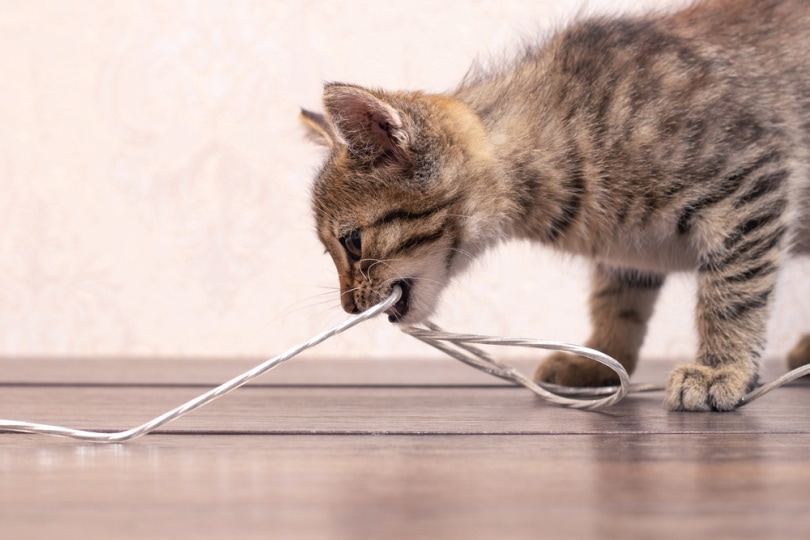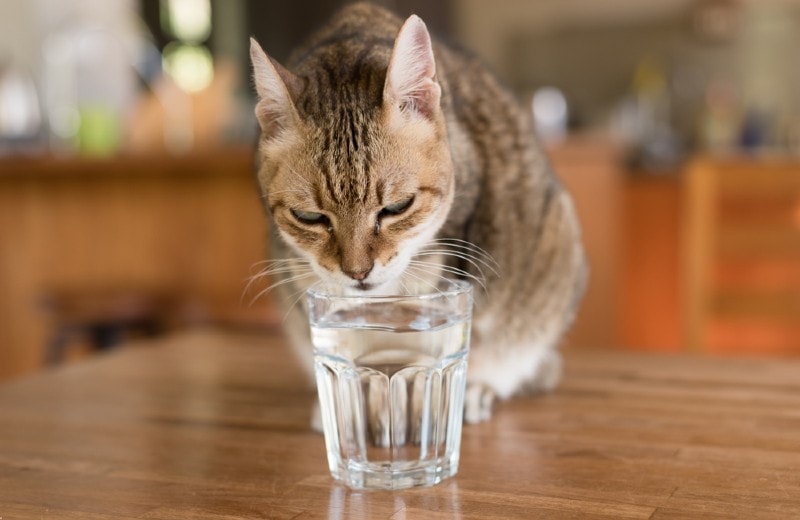Why Do Cats Fall Over When Wearing a Harness? 4 Reasons & Tips
Updated on
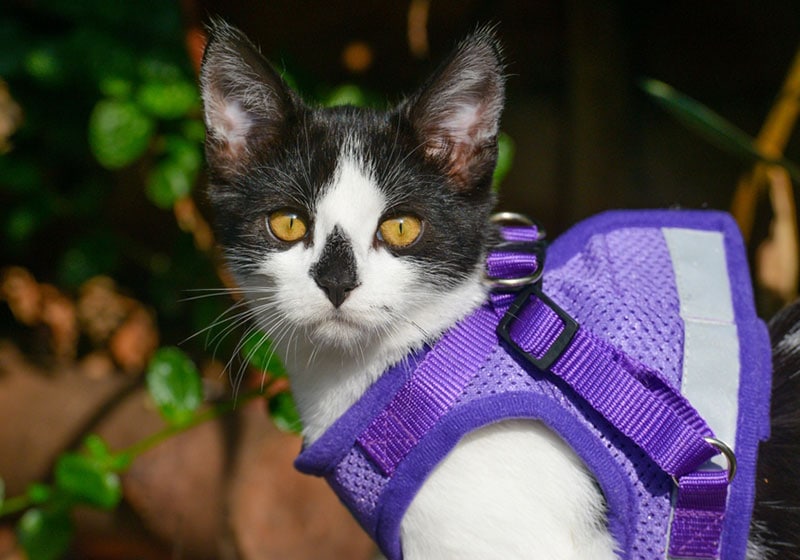
Click to Skip Ahead
Cats have many strange yet comical behaviors that make them cherished pets around the world. From knocking over vases unannounced to turning on faucets, most cat owners are not surprised when their pets start falling over during harness training. Placing a harness on your cat can be necessary for their safety, so ensuring that they adjust to wearing one is important.
However, it can be difficult to progress in harness training with your cat if they keep falling while wearing it. Why exactly do cats fall over when wearing a harness and is it a bad sign? This article will tell you everything you need to know.
Why Does Your Cat Fall Over in a Harness?
Let’s take a look at the four main reasons why your cat is falling over in a harness.
1. The Freeze Response
The freeze response is one of the cat’s several defense strategies against potential danger, such as fleeing or fighting. If your cat is feeling uncomfortable or trapped by the harness, especially if it’s their first time wearing one, their entire body may freeze up. This can eventually cause your cat to fall over as they are reluctant to move.
Since the harness is attached to their body, they are unable to run away from it or get it off. This is your cat’s way of expressing that they feel frightened by the harness and its unfamiliarity might be stressful.
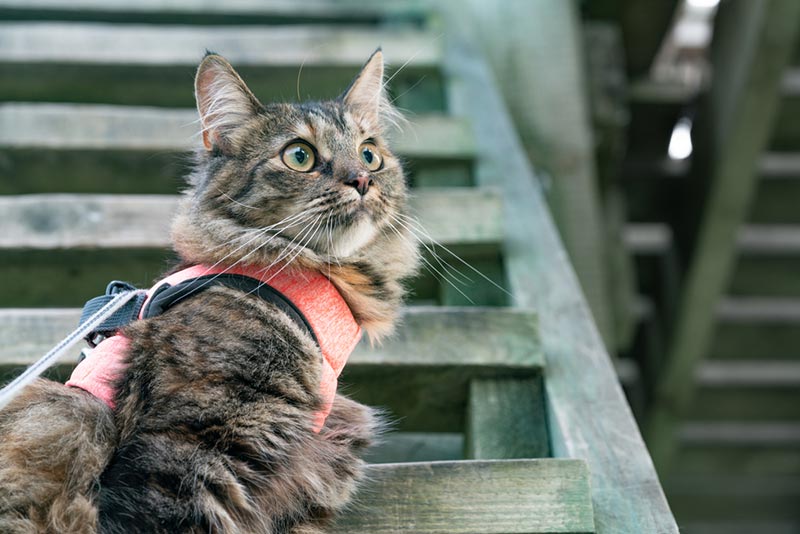
2. Pressure Points
If your kitten is falling over while wearing a harness, it could be triggering pressure points near their neck. This primarily applies to cats who haven’t reached adolescence yet and have a flexor reflex to go limp when picked up by their neck scruff. This is how their mother cat would have picked them up for the first few weeks of their life.
If the harness is tight enough to trigger the pressure points and activate the kitten’s flexor reflex, their limp body may fall over.
3. Trying to Get It Off
Cats may find a harness uncomfortable at first and try to get it off. Your cat could achieve this by rolling low along the ground, making it seem like they have fallen over. Cats might be wary about harnesses the first few wears, and they might simply be trying to get the harness off because it is too restrictive or uncomfortable.

4. It Is Too Restrictive
A restrictive harness may cause your cat to fall over because it’s too tight and interferes with their movement. When choosing a harness for your cat, you should always ensure that it fits both comfortably and securely. You should be able to fit two fingers underneath the harness with ease, otherwise, the harness’s size needs to be adjusted or swapped for a larger one.
How to Prevent Your Cat from Falling Over In a Harness
- Training: Begin harness training your cat from a young age, with 8 weeks being a good starting age. This allows them to adjust to wearing a harness and having something covering their chests and backs. However, cats can be harness-trained at any age with the right techniques. Keep in mind that young kittens may still have a flexor reflex that is triggered by wearing a harness.
- Comfortable design: Your cat’s harness should be comfortable without being restrictive, loose, or cutting into their skin. If the harness is poorly fitted or has an uncomfortable design, your cat is likely going to be reluctant to move in it.
- Right fit: The harness should fit your cat snuggly, but still allow for proper movement and prevent them from slipping out. Avoid using a harness on your cat that does not fit right, as this can be risky for your cat and possibly lead to injuries or escape. If your cat is still growing or has fluctuating weight, look into an adjustable harness that can accommodate their size.
- Positive reinforcement: You want your cat to associate their harness with a positive outcome, so it should never be used as a punishment. When your cat is wearing their harness, reinforce their good behavior with praise and their favorite treat afterward. You want to increase the likelihood of them wearing the harness again with a positive association.
- Do not force them: Never force your cat into a harness if they are showing signs of stress. While there is an exception during emergencies, placing the harness on your cat should be a good experience. This will be important if you want to avoid triggering your cat’s freeze response during the first few weeks of harness training.
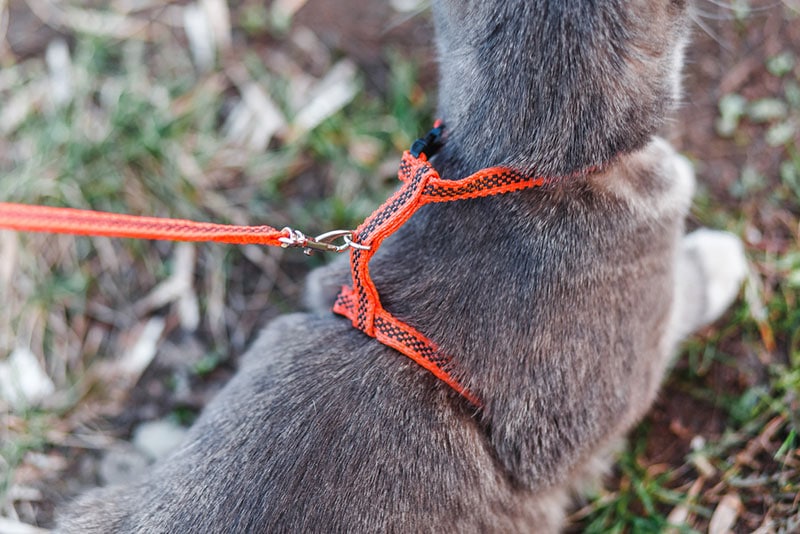
Do Cats Need to Wear Harnesses?
While a harness is optional for cats, it can be helpful when taking them outdoors or during emergencies. A harness can keep your cat secure and prevent them from escaping.
Using a harness and leash over a collar is preferred because it is safer for cats and has fewer risks. Collars are fitted around your cat’s neck, so when a leash is attached and pulled, it may damage your cat’s windpipe.
Harnesses are a much safer option because they put less pressure on their delicate necks and fit snugly around their chest and backs. Cats are also less likely to slip out of a harness than a collar.
Harness training your cat from a young age is important if you plan to use a harness in the future. Your cat should be able to wear a harness without falling over or becoming stressed, so give them time to get used to one.
What Types of Harnesses Can Cats Wear?
There are various types of cat harnesses available, each with a different design, size, and functionality. Some cat harnesses cover more of your cat’s chest area rather than their back, as some cats do not like the feel of overly large and restrictive harnesses. There are options for harnesses with soft and non-irritating materials for cats with sensitive skin, and others that can adjust to the size of your cat.
It’s a good idea to choose your cat’s harness carefully and look for one with a design that not only keeps your cat secure, but comfortable too.
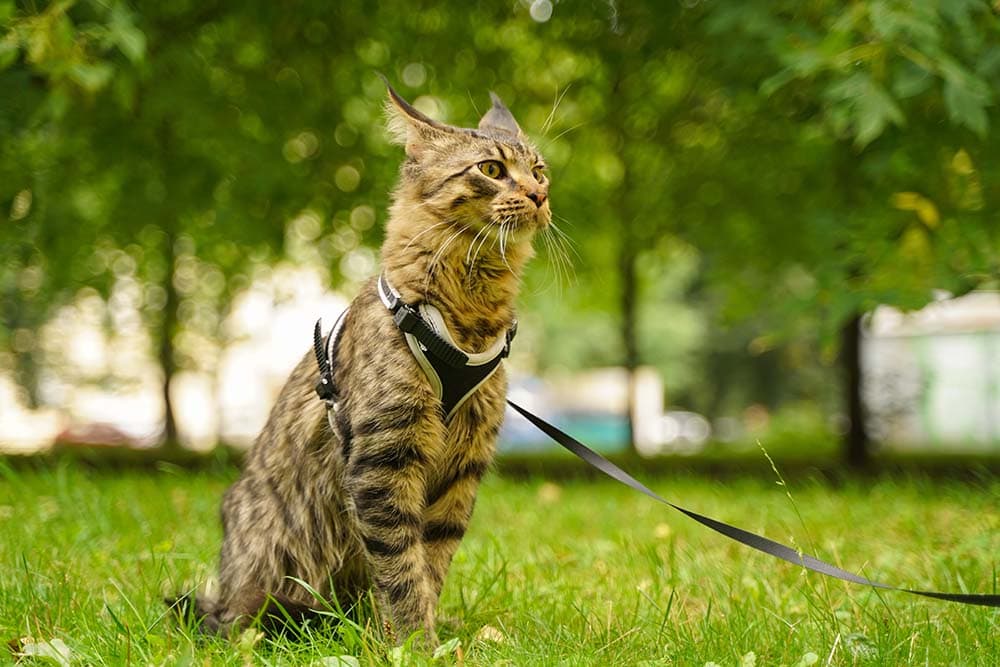
Conclusion
Cats may fall over in a harness for several reasons, such as comfort issues, pressure points, or the freeze response. It is normal for cats to be hesitant to wear a harness at first until they get used to it. However, harness training your cat using positive reinforcement can help them overcome their wear of wearing a harness. Once your cat has adjusted to wearing a properly fitted harness with a comfortable design, they might stop falling over in it.
Featured Image Credit: Georgina Winney, Shutterstock


